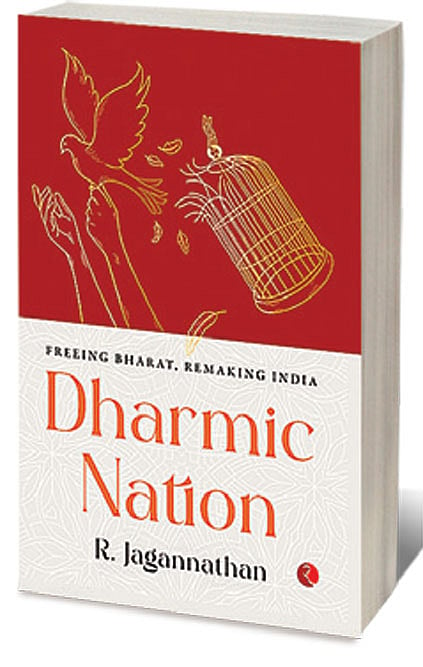Rediscovery of India

R JAGANNATHAN’S DHARMIC Nation is a compendium of virtually all topics that concern Hindus in India that are mostly ignored or even derided in ‘mainstream’ discussions. The nature of Hindutva, to issues like demography, ‘love jihad’ and challenges faced by Hindus in India and more are discussed in the book.
The author has not shied away from a full-throated argument in favour of issues that are of importance to everyone. Some of these concerns—such as adverse demography—are now a clear and present danger to the unity and integrity of India. And yet, these are either dismissed out of hand or are “explained away” by liberal critics of Hindutva.
Consider the issue of Muslim population, a controversial topic for Indian liberals. Hindu concerns with the issue are dismissed outright by comparing the overall Total Fertility Rate (TFR) for Muslims and Hindus. Because TFR for Muslims is falling, it is claimed their population will come nowhere near Hindu numbers and, hence, it is a myth peddled by communal Hindus. This is a disingenuous “explanation”. What matters is not the overall TFR but the demographic situation in areas where Muslim TFR remains high—even if it is falling—such as in Assam and other states in eastern India. In Lower Assam, for example, Muslim numbers in districts like South Salmara, Dhubri, Goalpara and Barpeta are large. (A distinction needs to be made here between indigenous, Assamese, Muslims and the Bengali immigrant stock: it is the latter population that is zooming.) The problem now extends to Middle Brahmaputra Valley districts like Nagaon and Morigaon. There is no acknowledgment of this reality. Instead, one hears mainstream dismissals like the “Assamese are communal.”
2025 In Review
12 Dec 2025 - Vol 04 | Issue 51
Words and scenes in retrospect
Jagannathan has not shied from discussing these topics. In chapter after chapter, he presents the “Hindu case” forcefully, backed with arguments.
The core of the book deals with issues around the definition of Hindutva, the need for Hinduism to be a missionary religion and—a delightful—detour on understanding religious competition in India from the perspective of product differentiation, an “industrial organisation” of sorts for these religions.
The author makes a case for “Hinduism lite” for the Indian masses if it is to compete with the influence of Islam and Christianity in India. The trouble is the very structure and organisation of Hinduism as it stands now. The rich metaphysical veins of Hinduism are ill-suited to Indian masses. This section is aggressively wooed by Islam and Christianity; hence, the appeal to Hinduism lite.
The trouble here is the very DNA of Hinduism, so to speak. Organised as a decentralised religion, Hinduism is very different from Islam and Christianity. In the latter two religions, political centralisation of societies where they gained ground either pre-dated them (Christianity) or was achieved side-by-side as the religion established itself (Islam). Hinduism stands apart: it was a decentralised religion in a society where political fragmentation was the norm and centralised empires, fleeting and ephemeral.
From that perspective, Hindutva, defined by the author as “…an attempt to create a broader cultural connect between Hindu groups, so that caste does not turn out to be a self-destructive form of diversity that makes Hinduism incapable of defending itself against its enemies and rivals,” is a late development.
Because of its late arrival, Hindutva is incapable of being a fully developed “political theology” of the kind seen in Christianity or Islam for that matter. Because the religion was decentralised, the burden on the political aspect is ruthlessly heavy. If a government that does not espouse the “Hindu cause” ceases to exist, the problems highlighted by Jagannathan will grow manifold. In a country like India, that is—ultimately—subject to the vagaries of public mood. And it is certainly too late for a centralised variant of Hinduism to emerge. Plus, there is a far more threatening religion, one dangerously more potent than Islam and Christianity that is at work in India: liberalism. From education to the “apparatus of persuasion,” its adherents control the most important levers of public life. Jagannathan’s book is important and should be read widely.

